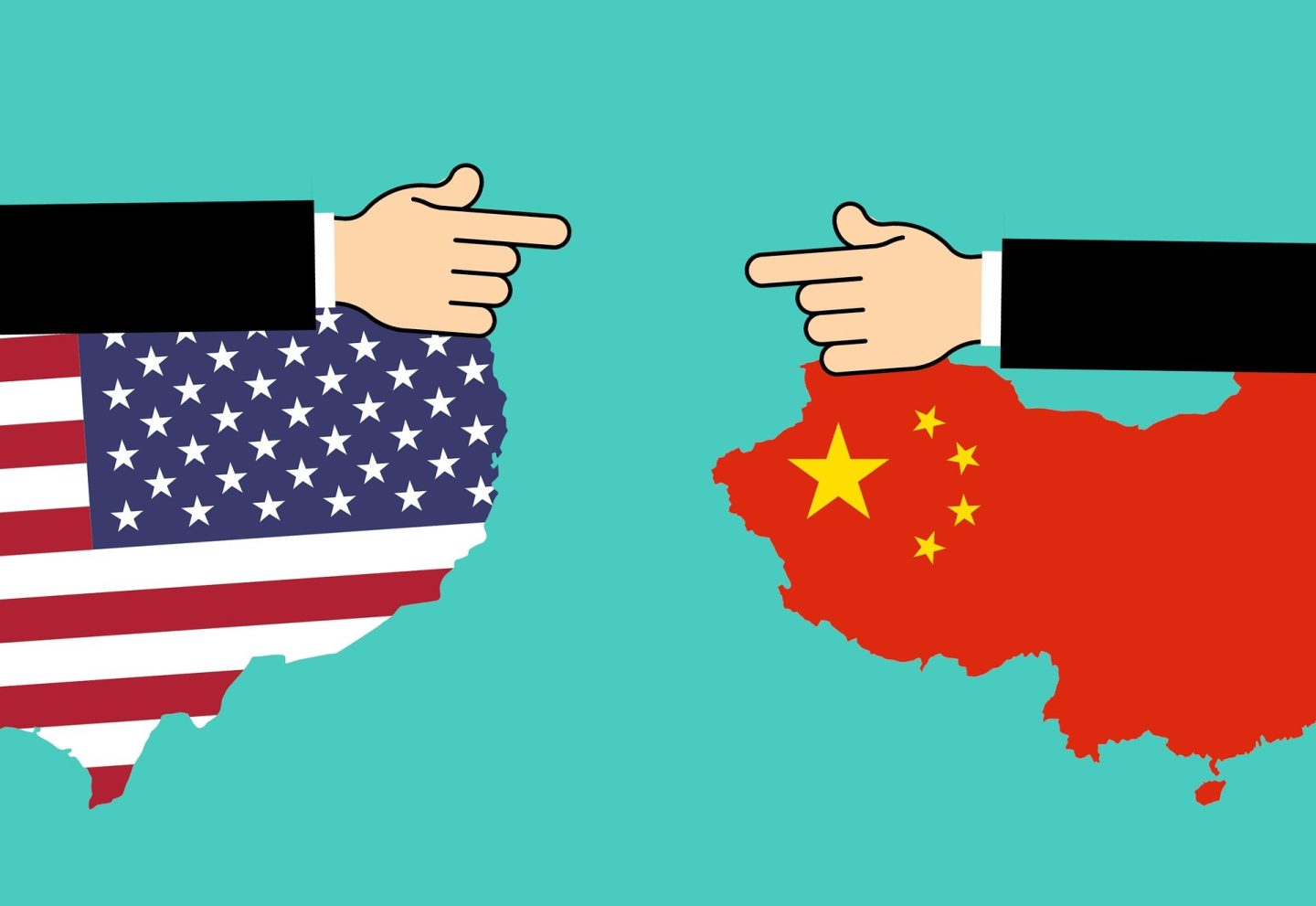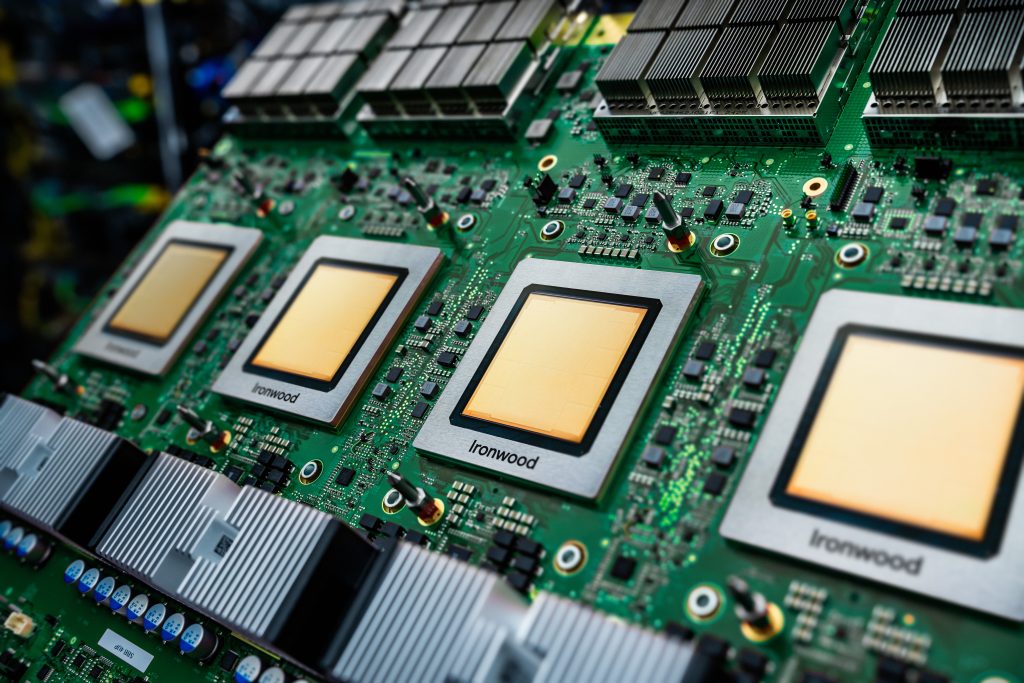- Trump’s tech tariff threats reach unprecedented levels.
- Potential 100%+ duties on China, placing digital supply chain at risk.
- Asian electronics manufacturers and US tech giants face market disruption.
“We’re all living inside the president’s head, and nobody knows anything,” wrote The Atlantic recently – an encapsulation of the market turmoil surrounding Trump’s tech tariffs.
The tariff policy has intensified rapidly, marking an escalation from the president’s previous trade approach. The latest threat to impose an additional 50% duty on Chinese imports unless Beijing withdraws its retaliatory measures would push the total tariff rate to 104%, more than quadrupling the cost of importing Chinese goods into the US.
Beijing’s 34% retaliatory tariffs, imposed in direct response to Trump’s initial tariff announcements, represent China’s own calculated approach – not seeking to match the complete US duties but sending a message that it won’t absorb economic punishment without a proportional response.
China’s Commerce Ministry stated, they “firmly oppose” the US threats and will “resolutely respond,” calling Trump’s approach “doubling down on its mistakes” and “exposing its nature of coercion.”
The severity of this action goes far beyond the 25% peak rates seen during Trump’s first administration, when economists warned of significant market disruption. Now, global technology supply chains that took decades to optimise face the prospect of a complete restructuring, as duties exceeding 100% would effectively close off the world’s largest consumer market to Chinese manufacturers.
This represents a continuation of Trump’s first-term policies and an amplification that creates immediate consequences for technology companies and consumers. “If China does not withdraw its 34% increase above their already long-term trading abuses by tomorrow, April 8th, 2025, the United States will impose ADDITIONAL Tariffs on China of 50%, effective April 9th,” Trump declared on his Truth Social platform this week.
Immediate market response to Trump’s tech tariffs
The escalating tariffs have created an unexpected short-term boom for companies like Apple, with consumers flooding stores to purchase electronics before potential price increases. “Almost every customer asked me if prices were going to go up soon,” reported one Apple store employee, who requested anonymity as they weren’t authorised to speak publicly.
Bloomberg reports that Apple’s US retail locations experienced higher sales this past weekend than in previous years. The sudden purchasing surges illustrate the real-world impact of tariff policies on consumer behaviour, with the prospect of iPhones potentially costing thousands of dollars creating what one employee described as an atmosphere resembling “the busy holiday season.”
The mathematical absurdity of “reciprocal” tariffs
What makes Trump’s approach particularly problematic is the disconnect between his “reciprocal tariff” rhetoric and the calculation method employed. Documents from the office of the US Trade Representative reveal that the tariff levels do not match other countries’ rates; instead, they are based on bilateral trade deficits. The formula mathematically ensures that any nation selling more to America than it buys faces punitive duties, regardless of their actual trade practices.
The reductive approach treats complex global trade relationships as a simplistic zero-sum game, ignoring the reality of how modern supply chains function.
Tech industry fallout
Few sectors stand to lose more from the escalation in trading relations than technology. The industry’s heavy reliance on transnational production networks means that components often cross borders multiple times before reaching consumers. Each crossing potentially incurs tariffs, creating a compound effect that industry analysts call a “tariff cascade.”
Apple exemplifies companies subject to this effect. While it has worked to diversify its manufacturing base since Trump’s first term, shifting some production to Vietnam, India, and other locations, China remains central to its supply chain. The company’s stock suffered its worst three-day rout since 2001 following Trump’s tariff announcements. Bloombergreported that Apple “lost more than half a trillion dollars in valuation” in just two trading days.
Beyond rhetoric: the real-world impact
Despite the president’s claims that tariffs will revitalise American manufacturing, economic forecasts paint a different picture. Fitch Ratings warned that the tariffs have “significantly raised the risk for a recession in the United States” through higher consumer prices, squeezed wages, and dampened business investment.
Larry Fink, CEO of BlackRock, said “most CEOs I’ve talked to would say we are probably in a recession right now.”
For tech consumers, the Yale Budget Lab estimates American households could face an additional $2,100 in annual costs due to the April 2nd tariff announcement alone. Lower-income households will bear a disproportionate burden of these increases, as they spend a higher percentage of their income on consumer electronics and other goods affected by the tariffs.
Strategic incoherence
Perhaps most concerning for the technology sector is the lack of coherent objective.
As Navin Girishankar, head of the economic security programme at the Centre for Strategic and International Studies, told the South China Morning Post, “The Trump administration has been transparent all along about its desire to use tariffs primarily as an instrument of choice for several different objectives,” but “less coherent, I would say incoherent, about the actual goals.”
The strategic ambiguity leaves tech companies in a precarious position, unable to make informed long-term investment decisions. Should they accelerate reshoring efforts, potentially at great expense, or hope for a negotiated resolution?
Cracks in support
Even some of Donald Trump’s most staunch supporters have begun to express concern. Elon Musk, who serves as a senior adviser to Trump, has expressed discomfort with the policy. Meanwhile, billionaire investor Bill Ackman stated bluntly, “I am just frustrated watching what I believe to be a major policy error occur.”
The coming days will determine whether Trump follows through on his threat to escalate duties to their new levels. What’s already clear is that his approach to trade represents a wrecking of the integrated global technology ecosystem that has fuelled innovation worldwide.
For tech companies and consumers across Asia, the message is unmistakable: the era of predictable trade in digital goods is over, at least for now. As markets reel and supply chains reconfigure, uncertainty is the only certainty.








